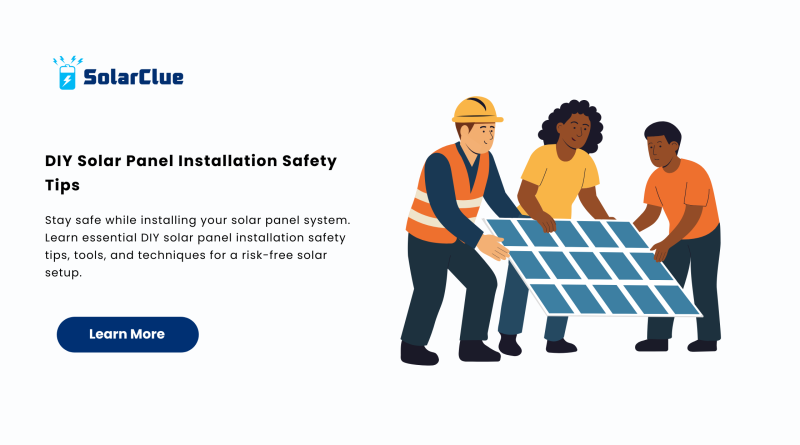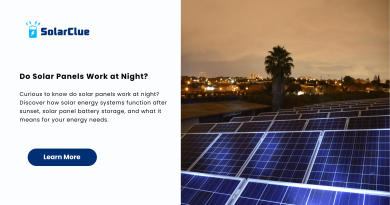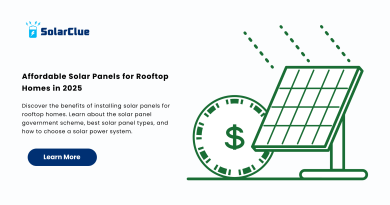DIY Solar Panel Installation Safety Tips
As the demand for solar energy grows, many homeowners are choosing to install solar panels for their home on their own. DIY solar panel installation can save money and provide a sense of accomplishment, but it also involves risks. Handling electrical equipment and working at heights requires careful planning and strict safety measures. This guide covers all the essential DIY solar panel installation safety tips to keep your project safe and successful.
Table of Contents
- 1 Why Safety Should Be Your First Priority
- 1.1 1. Check the Condition of Your Roof
- 1.2 2. Learn the Basics of Electricity
- 1.3 3. Invest in Proper Safety Gear
- 1.4 4. Protect Against Falls
- 1.5 5. Monitor the Weather Forecast
- 1.6 6. Turn Off Power Completely
- 1.7 7. Install Panels in Low-Light Conditions
- 1.8 8. Use a Reliable Mounting System
- 1.9 9. Follow Local Codes and Obtain Permits
- 1.10 10. Choose the Best Solar Panel for Your Home
- 1.11 11. Test the System Safely
- 1.12 12. Perform Regular Maintenance
- 1.13 13. Know Your Limits
- 1.14 14. Avoid These Common DIY Mistakes
- 1.15 15. Educate Yourself from Trusted Resources
- 2 Conclusion
- 3 FAQs
Why Safety Should Be Your First Priority

Installing a solar panel system isn’t just a matter of setting up a few panels on your roof. It involves electrical wiring, potential structural changes, and working in hazardous conditions. Accidents can be costly—both financially and physically. Prioritizing safety ensures your solar power system functions correctly without putting you or your family at risk.
1. Check the Condition of Your Roof
Before starting your solar panel installation, inspect your roof to make sure it’s in good shape. Look for signs of wear, leaks, or structural weakness. Installing panels on a damaged roof can lead to costly repairs later and may even void warranties.
2. Learn the Basics of Electricity
DIY doesn’t mean skipping the technical learning. Understand how solar power systems work, including DC and AC currents, inverters, grounding, and load calculations. If you’re not confident, hire a certified electrician for the electrical part of the installation.
3. Invest in Proper Safety Gear
Using the right safety equipment is critical. Essential personal protective equipment (PPE) includes:
-
Insulated gloves
-
Safety goggles
-
Hard hat
-
Non-slip boots
-
A safety harness for roof work
Always inspect your gear before use to ensure maximum protection during your solar setup.
4. Protect Against Falls
Since solar panels are often installed on rooftops, fall protection is essential. Use ladders with stabilizers and wear a full-body safety harness anchored securely. Avoid working alone—have someone spot you for added safety.
5. Monitor the Weather Forecast
Avoid installation on rainy, windy, or overly sunny days. Wet roofs increase the risk of slipping, and high temperatures can affect both your safety and the performance of tools and equipment.
6. Turn Off Power Completely
Before handling any electrical connections, shut off your home’s main power supply. Even a low-voltage shock can be dangerous. Use a voltage tester to confirm that all wires are safe to touch.
7. Install Panels in Low-Light Conditions
Since solar panels produce electricity when exposed to sunlight, it’s best to install them during early morning or late evening when sunlight is minimal. Alternatively, cover the panels to block sunlight until installation is complete.
8. Use a Reliable Mounting System
Select a mounting system that suits your roof’s design and can handle the weight of the best solar panel models you choose. Poor mounting can lead to instability and damage during bad weather conditions.
9. Follow Local Codes and Obtain Permits
Check your local building codes and obtain all necessary permits before installation. Skipping this step can result in fines or removal of your solar panel system. In many areas, inspections are required to connect your system to the grid.
10. Choose the Best Solar Panel for Your Home
All solar panels are not equal. Evaluate efficiency, warranty, durability, and cost before selecting the best solar panel for your setup. Panels with higher efficiency might cost more upfront but offer better long-term returns. You can find expert recommendations and options at solarclue.com.
11. Test the System Safely
Once installation is complete, carefully test the system as per the manufacturer’s instructions. Measure voltage output and check all wiring and components for functionality before turning on the main switch.
12. Perform Regular Maintenance
Maintaining your solar panel system keeps it operating efficiently and safely. Check for loose connections, clean the panels to remove debris or dust, and monitor energy output periodically.
13. Know Your Limits
If you encounter complex electrical configurations or structural concerns, don’t hesitate to call a licensed installer. DIY is great for saving money, but your safety should never be compromised.
14. Avoid These Common DIY Mistakes
Watch out for frequent errors, such as:
-
Misjudging the roof’s weight capacity
-
Ignoring shading from trees or buildings
-
Using incompatible system components
-
Failing to test the system properly
Being aware of these mistakes helps ensure a successful installation.
15. Educate Yourself from Trusted Resources
Always rely on verified resources for installation guidance. For more helpful tips and detailed guides, explore blog.solarclue.com, where you’ll find tutorials, product comparisons, and expert advice tailored to homeowners like you.
Conclusion
Taking on a DIY solar panel installation project can be incredibly rewarding—but only when it’s done safely and correctly. From understanding how solar power systems work to using the right tools and protecting yourself from potential hazards, following these DIY solar panel installation safety tips will make the journey smoother and safer. Clean energy should never come at the cost of your well-being.
For more expert tips, product recommendations, and step-by-step guides, make sure to visit solarclue.com and stay updated with the latest trends and tutorials at blog.solarclue.com.
FAQs
1. Can I install solar panels on my own?
Yes, but you must have the right tools, knowledge, and safety practices. Electrical work should be handled with caution, or better yet, by a professional.
2. Is it dangerous to install solar panels yourself?
Yes, especially if you’re not trained in electrical systems or working at heights. Always prioritize safety and consider hiring help for complex tasks.
3. What is the safest time of day for solar panel installation?
Early mornings or late afternoons are safest, as solar panels produce less electricity in low light, reducing the risk of electric shock.
4. Do I need permission to install solar panels?
In most places, yes. Always check with local authorities for building codes, permits, and inspections required for grid connection.
5. How long do solar panels typically last?
Most solar panels last 25–30 years. Regular maintenance can help you get the most out of your investment.
Want more expert advice and DIY guides? Join the solar movement and start your energy-saving journey at solarclue.com—your one-stop destination for smart solar living.



